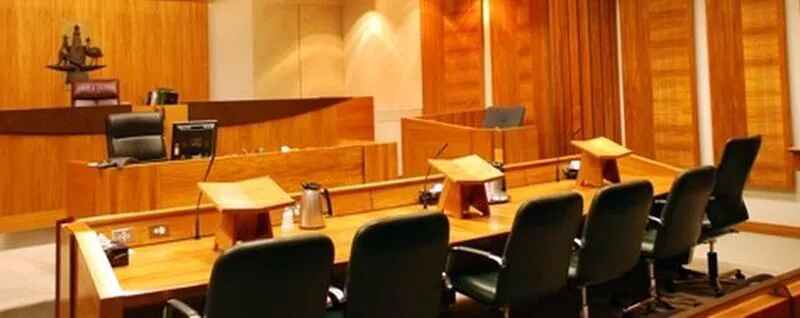Dangerous driving or dangerous operation of a motor vehicle is one of the most serious traffic offences in Queensland. Dangerous driving is a criminal offence not just a traffic offence meaning a conviction can have very serious consequences.
Types of dangerous driving charges
The following types of dangerous driving charges exist in Queensland;
-
Dangerous driving
-
Dangerous driving - adversely affected by intoxicating substance
-
Dangerous driving - excessively speeding or taking part in an unlawful race
The penalties increase as the offence becomes more serious.
The arrest process and the right to silence
The most likely cause to be arrested for dangerous driving is there has been an accident and the police have attended the accident scene or another motorist has made a complaint.
In general it would be unlikely a driver would be arrested at the crash site, more likely the police would attend, take statements and photos etc and then some time later determine that a driver is at fault and arrest them and give them a notice to appear in court.
Where it is alleged that someone has been killed or has suffered very serious injuries then most likely the forensic crash unit (FCU) would investigate. Less serious crashes would generally be investigated by general service police officers.
Remember you have the right not to give a statement to police. It is a fundamental rule of Queensland criminal law that a person accused of an offence is not obliged to answer police questions. A person accused of an offence has a right to silence – that is, a right to say nothing in the face of police questioning.
The right to silence is contained in Queensland common law and is protected in legislation. Section 397 of the Police Powers and Responsibilities Act 2000 provides that;
Right to remain silent not affected
Nothing in this chapter affects the right of a person to refuse to answer questions, unless required to answer the questions by or under an Act
This right to silence cannot be taken away from you and in most cases you should never give a formal interview to police and you would only give a statement if you have first obtained legal advice. In our opinion people in Queensland far too easily give up their right to silence when speaking to police. Often a person’s willingness to talk to police results in charges being bought or harsher penalties in court.

What is the law of dangerous driving
Section 328A of Queensland’s Criminal Code defines dangerous driving as;
(1) A person who operates, or in any way interferes with the operation of, a vehicle dangerously in any place commits a misdemeanour.
Penalty—
Maximum penalty—200 penalty units or 3 years imprisonment.
(2) If the offender—
(a) at the time of committing the offence is adversely affected by an intoxicating substance; or
(b) at the time of committing the offence is excessively speeding or taking part in an unlawful race or unlawful speed trial; or
(c) has been previously convicted either upon indictment or summarily of an offence against this section;
the person commits a crime.
Penalty—
Maximum penalty—400 penalty units or 5 years imprisonment.
A penalty unit is currently $154.80.
What is the definition of dangerous driving?
The term "operates a motor vehicle dangerously" means "operates a vehicle at a speed or in a way that is dangerous to the public having regard to all the circumstances" including:
-
the nature, condition and use of the place; and
-
the nature and condition of the vehicle; and
-
the number of persons, vehicles or other objects that are, or might reasonably be expected to be, in the place; and
-
the concentration of alcohol in the driver’s blood; and
-
the presence of any other substance in the driver’s body
Examples of dangerous driving
A charge for dangerous driving often results from split second errors in judgement. We have in the past acted for people who have been charged with dangerous driving for;
-
Failing to see a motorcycle before entering an intersection and unfortunately striking and killing the motorcyclist
-
Being temporarily distracted causing the car to run off the road into the other lane of traffic causing grievous bodily harm to passengers in another vehicle
-
Falling asleep at the wheel resulting in a collision with a power pole and serious injuries to the passenger in the car
-
Exiting the road after missing a turn, then turning too sharply in the dirt causing the vehicle to roll
-
Driving at excessive speed
-
Driving through a roundabout at excessive speed and cutting off other motorists
-
Striking and killing a cyclist after traveling too close to the vehicle in front
The state of mind of the driver is not an essential element of the charge. Therefore, it is possible the driver thought they were driving safely yet they were actually driving dangerously.
The ordinary meaning of dangerous is fraught with or causing danger; involving risk; perilous; hazardous; unsafe’. It describes, when applied to driving, a manner or speed of driving which gives rise to a risk to others, including motorists, cyclists, pedestrians and the driver’s own passengers.
For the driving to be dangerous, there must be some feature which is identified not as a mere want of care, but which subjects the public to some risk over and above that ordinarily associated with the driving of a motor vehicle. Just because the driving was as a result of brief or momentary inattention does not mean it cannot be dangerous. Often people are charged with dangerous driving for striking a car, pedestrian or cyclist they simply didn’t see.
More explanation of the different types of dangerous driving charges
Dangerous driving - adversely affected by intoxicating substance
“Adversely affected by intoxicating substance” is not defined under the act therefore even low range drink driving levels could mean a person is charged. In R v Anderson the court determined that "adversely affected by alcohol" as meaning some material influence upon the person from the consumption of alcohol; material detraction in the driver’s ability to control a vehicle in consequence of the driver’s consumption of alcohol.
Dangerous driving - excessively speeding
"excessively speeding" means driving or operating a vehicle at a speed more than 40km/h over the speed limit applying to the driver under the Transport Operations (Road Use Management) Act 1995 .
Dangerous driving - taking part in an unlawful race
means a race involving a vehicle in contravention of the Transport Operations (Road Use Management) Act 1995 , section 85.
Dangerous driving - causing Death or Grievous Bodily Harm
Grievous bodily harm is defined to mean the loss of a distinct part or organ of the body or serious disfigurement or any bodily injury of such a nature that, if left untreated, would endanger or be likely to endanger life or cause or be likely to cause permanent injury to health. It is immaterial whether medical treatment is or could have been available to the injured person.
We have a whole separate article on dangerous driving causing death or GBH

What is the difference between careless driving and dangerous driving?
Dangerous driving is the more serious charge and generally reserved where the actions of the driver could be considered dangerous rather than merely careless or without due care and attention. In deciding whether the driving was dangerous the court looks at the speed the vehicle was driven and whether the driving was dangerous to the public having regard to all the circumstances including:
-
the nature, condition and use of where the accident occurred
-
the nature and condition of the vehicle
-
the number of persons, vehicles or other objects that are, or might reasonably be expected to be in the area
Is there a difference between dangerous driving and dangerous operation of a motor vehicle?
No, both are the same thing.
Is there a defence to a charge of dangerous driving?
Defences to a charge of dangerous driving might include:
-
The driving was in fact not dangerous, for example the condition of the road or the vehicle caused the accident.
-
Necessity, for example the driver had to drive as a result of an emergency
-
The accused was wrongly identified as the driver
Lets look at possible defences in more detail
Defect in the vehicle
Another possible defence will arise if you prove that the vehicle suffering from a sudden and previously unknown defect which deprived you of control of the vehicle. In this case, you will be seeking to demonstrate that the dangerous driving was caused by the mechanical defect, and thus, was beyond your conscious control.
The key phrase to this defence is “sudden and previously unknown”. You will need to demonstrate that your vehicle was properly maintained and that the defect was not known to you in spite of your reasonable prudence.
You will also need to demonstrate that the defect occurred before you had a chance to take action. For example, you will not be able to raise this defence if your car’s steering becomes damaged but you decide to try to drive the car home before you lose total control or that you had been warned by a mechanic of possible mechanical issues and didn’t fix the fault and kept driving.
Sudden medical condition
You may be able to raise a defence if you prove that you experienced a sudden medical condition which caused you to lose conscious control of your body. For example, if you suddenly fall asleep, you cannot be responsible for what happens after you fall asleep, as you are no longer in conscious control of the vehicle. Like the defence of sudden mechanical failure, you must demonstrate that your medical condition was previously unknown to you and came on before you had a chance to take action. For example, you will not be able to raise this defence if you drove knowing that you were severely fatigued.
Extraordinary emergency
Lastly, you may be able to raise the defences of “extraordinary emergency” or acting to save yourself. In short, you must demonstrate that you (or someone else) were in a life-threatening situation that could only be avoided by you operating your vehicle in a way that would otherwise constitute dangerous operation of a vehicle. For example fleeing from a situation where you were being attacked.
You must also demonstrate that there was no other reasonable course of action available to you other than to operate your vehicle dangerously. Suffice to say that the circumstances in which these defences arise are exceptionally rare.
Not the driver
Obviously if a person claims they were not the driver then this is defence. This defence often occurs when the drivers was not detained at the time of the offence (for example the vehicle left the scene of the accident) but only arrested later on. Whether this defence will be successful will depend on the evidence the police might have, for example do they have CCTV footage, do they have a witness, do they have DNA etc
If this defence is to be raised if might be better to first try and negotiate with the prosecutor to withdraw the charge.
Momentary inattention
It is not a defence to a charge of dangerous driving to show that you did not mean or did not think you were driving dangerously, even a momentary period of inattention that results in an accident can be classed as dangerous driving. The test is whether the person commit some act that subject the public to risk over and above that normally associated with driving.
However momentary inattention if present is a major factor in deciding the penalty, so while not a defence it is important in sentencing. See the case summary of Gruenert below where momentary inattention meant even through the driver was found guilty of dangerous driving causing death he did not serve time in prison.
We have a full article explaining every defence to a dangerous driving charge in Queensland.
What does the prosecutor need to prove?
In order to be found guilty of the offence the prosecutor must prove that a person;
-
Was driving or operating a motor vehicle;
-
Was driving or operating that vehicle in any place (other than a place used to test vehicles that all other vehicles are prevented from entering);
-
That the driving was dangerous.
What court will hear the charge?
Although all dangerous driving charges start in the magistrates court some can only be finalised in the district court. If the charge is dangerous driving causing grievous bodily harm (GBH) or dangerous driving causing death then the district court will ultimately determine the matter, all other dangerous driving charges are finalised in the magistrates court

What penalty does a dangerous driving charge carry?
The penalty for dangerous driving can be up to 3 years imprisonment, a fine of up to $3,000 and a lengthy disqualification of your driver’s licence.
If a person is injured or killed as a result of an accident it is possible to be charged with dangerous driving causing injury or death. If any of the following aggravating circumstances exist and a person was injured or killed then the maximum penalty is increased to 14 years in prison:
-
at the time the driver was adversely affected by alcohol or drugs; or
-
at the time the driver was excessively speeding or taking part in an unlawful race; or
-
the driver has previously been convicted for dangerous driving
The court must also disqualify a persons drivers licence. The length of time depends on the actual charge. Below is the minimum licence disqualification period that apply;
-
Dangerous driving – 6 months
-
Dangerous driving - adversely affected by intoxicating substance – 6 months
-
Dangerous driving - excessively speeding or taking part in an unlawful race – 6 months
-
Dangerous driving - causing death or grievous bodily harm – 1 year
These are just the minimum disqualification period that apply.
It is critical to get legal advice if you are charged with dangerous driving as prison is a real possibility for this offence or at the very least a large fine and a long disqualification period. A person should never appear unrepresented on a charge of dangerous driving as the legal issues are simply too complex.
Dangerous driving is also a type 1 hooning offence meaning the vehicle you were driving can be impounded or immobilised for 90 days. For the second offence the vehicle can be impounded and may be forfeited to the state at the end of any legal proceedings against you. For more details visit our hooning webpage.
How does the court work out the penalty?
First the court is going to look at;
-
the maximum penalty prescribed for that offence
-
the nature and seriousness of the harm done
-
the previous convictions of the offender
-
the offender's age, character and intellectual capacity
-
the prevalence of the offence
-
How long the offending occurred for
-
Whether other road users were put in danger
Then there will look at mitigating factors, that is factors that would usually reduce the penalty the court might normally impose;
-
an early guilty plea
-
no criminal or traffic history
-
significant physical or mental health issues
-
rehabilitation efforts after the offence but before the sentence
-
Character references
-
Completing a Traffic Offender Program
-
Completing a defensive driving course
-
Making an apology to the victim or their family

Will I receive a jail sentence?
There exists the real possibility that a person can be sent to jail even if this is their first dangerous driving charge. It all depends on the circumstances of the offences, what damage was done and whether people were hurt. If the charge is dangerous driving causing grievous bodily harm (GBH) or death then a prison sentence will almost always be imposed.
We have had great success in the past convincing courts that the driver should not be sent to prison but instead should serve community service or that the prison sentence should be immediately suspended.
If you were adversely affected by an intoxicating substance i.e. alcohol or drugs at the time of the offence this will increase the penalty the court gives.
Will I get a criminal conviction?
Possibly, dangerous driving is a criminal offence meaning the court can choose whether to record a conviction or not. If a conviction is recorded this may have an effect on overseas travel or employment prospects in the future.
It is possible to ask the court not to record a conviction especially if you are first time offender.
What impact will a conviction on a traffic history have?
-
Increased insurance costs
-
Possibility of an insurance claim for any damage being rejected
-
An employer or potential will see the offence if they see your criminal history
-
Inability to travel to some countries
In order to convince a judge not to record a conviction you would have to address the following factors;
The nature of the offence
This is fairly obvious the more serious an offence the more likely a conviction will be recorded. With a dangerous driving charge the court will look at whether any accident occurred, how serious the accident was and any damage or injuries caused.
If imprisonment forms a part of the sentence even if wholly suspended then a conviction must be recorded.
The offender’s character and age
Younger offenders are more likely not to have a conviction recorded for an undue care and attention charge. This does not mean older offenders will automatically have a conviction recorded as an offender’s character is also taken into account. Character would usually be judged on a person’s traffic and criminal history (if any).
The impact that recording a conviction will have on the offender
The impact of the recording of a conviction must be taken into account by the court. Specifically the act says the court must look at the impact a conviction being recorded would have on a persons:
-
economic or social wellbeing; or
-
chances of finding employment.
What can I do to reduce my penalty and disqualification period?
The best thing is obviously to engage an experienced traffic lawyer to act for you. A lawyer knows what the court needs to hear to get the lowest penalty possible.
Other might be;
-
Completing QTOP
-
Writing an apology letter
-
Character references
Negotiations with the prosecutor
We have a whole article on negotiating with the prosecutor for traffic matters however in general negotiations with a prosecutor would fall into the following categories;
-
Negotiations regarding the facts of what occurred
-
Negotiations regarding a lower charge
-
Negotiations regarding withdrawing the charge entirely
Negotiations regarding the facts of what occurred
The facts presented to the magistrate can change their perception of the matter and ultimately the penalty. Negotiations might make the facts more favourable to the defendant
Negotiations regarding a lower charge
The lower the charge the lower the penalty. Negotiations might reduce a charge of dangerous driving to careless driving causing and if that occurred a disqualification might be avoided.
Negotiations regarding withdrawing the charge entirely
The prosecutor has the ability to complete withdraw the charge where they cannot be certain they could successfully prosecute the driver or in the interests of justice.
If the charge is withdrawn the court throws the charge out and that’s the end of the matter.
In some circumstances we have been able to argue that the police should withdraw the charge as they don’t have a strong enough case.
Pleading not guilty
If you feel you are not guilty of the offence or have a defence then seek the advice of an experience traffic lawyer.
You have the right to plead not guilty and force the prosecutor to try and prove you are guilty at a trial beyond a reasonable doubt.

Leading cases on dangerous driving in Queensland
The case involved an appeal against a sentence of three years' imprisonment, suspended after nine months, and disqualification from holding or obtaining a driver licence for four years. The appellant, Maher, had pleaded guilty to dangerous operation of a motor vehicle causing death.
The District Court Judge had found that Maher had been driving at an excessive speed and had failed to see an oncoming motorcycle until it was too late. As a result, the motorcyclist, Brian Russell Gibson, was killed.
The appellant argued that the sentence was manifestly excessive, and that the District Court Judge had failed to take into account his personal circumstances, including his lack of prior criminal history and his remorse for the death of the victim.
The Court of Appeal dismissed the appeal, finding that the District Court Judge had taken into account all relevant factors when sentencing Maher. The Court also found that the sentence was not manifestly excessive, given the seriousness of the offence and the fact that a person had been killed.
The key points of the case are as follows:
- Maher was sentenced to three years' imprisonment, suspended after nine months, and disqualification from holding or obtaining a driver licence for four years for dangerous operation of a motor vehicle causing death.
- The appellant appealed against the sentence, arguing that it was manifestly excessive.
- The Court of Appeal dismissed the appeal, finding that the sentence was not manifestly excessive.
- The key factors that the Court of Appeal considered when dismissing the appeal were the seriousness of the offence, the fact that a person had been killed, and the appellant's lack of prior criminal history and his remorse for the death of the victim.
Jiminez v The Queen (1992) 173 CLR 572
Jimenez was a decision of the High Court of Australia that considered the legal implications of falling asleep at the wheel.
The case involved a man named Jiminez who was charged with dangerous driving causing death. Jiminez had fallen asleep at the wheel of his car and had collided with another car, killing the driver of the other car.
Jiminez argued that he should not be convicted of dangerous driving because falling asleep at the wheel is not a voluntary act. The High Court rejected this argument, finding that falling asleep at the wheel can be considered a voluntary act if the driver has failed to take reasonable steps to prevent themselves from falling asleep.
The High Court's decision in Jiminez v The Queen has been influential in shaping the law on dangerous driving in Australia. The decision has been cited in a number of subsequent cases, and it has been used to convict drivers who have fallen asleep at the wheel.
The Jiminez decision is important because it clarifies the legal implications of falling asleep at the wheel. The decision makes it clear that drivers who fall asleep at the wheel can be convicted of dangerous driving, even if they did not intend to fall asleep.
The decision also has implications for the way that drivers should manage their sleep when they are driving. Drivers should be aware of the risks of falling asleep at the wheel, and they should take steps to prevent themselves from falling asleep. This includes getting enough sleep before driving, avoiding driving when they are tired, and taking breaks when they are feeling drowsy.
Gallaty was a decision of the District Court of Queensland that considered the issue of whether a driver can be convicted of dangerous driving if they were not aware that they were driving dangerously.
The case involved a man named Gallaty who was charged with dangerous driving causing grievous bodily harm. Gallaty had been driving a truck when he collided with another car, seriously injuring the driver of the other car.
Gallaty argued that he should not be convicted of dangerous driving because he was not aware that he was driving dangerously. He argued that he had been driving at a safe speed and that he had not been paying attention to the road because he was distracted by his thoughts.
The District Court rejected this argument, finding that Gallaty could be convicted of dangerous driving even if he was not aware that he was driving dangerously. The Court found that Gallaty's driving was objectively dangerous, regardless of his state of mind.
The District Court's decision in R v Gallaty is important because it clarifies the legal implications of dangerous driving. The decision makes it clear that drivers can be convicted of dangerous driving even if they were not aware that they were driving dangerously.
The applicant, Murray Huxtable, was a professional truck driver who caused a fatal accident by colliding with the rear of a car that had stopped at an intersection. The car was pushed into the path of another car, killing the driver of the first car and injuring the driver of the second car. The applicant pleaded guilty to dangerous operation of a vehicle causing death and grievous bodily harm. He was sentenced to five years imprisonment suspended after 15 months with an operational period of five years, and disqualified from driving for two years.
He applied for leave to appeal against his sentence, arguing that it was manifestly excessive. The Court of Appeal granted leave to appeal and allowed the appeal, reducing his sentence to three and a half years imprisonment suspended after 14 months with an operational period of three and a half years, and his disqualification period to two years.
The Court of Appeal considered the applicant's conduct to be prolonged inattention rather than momentary inattention, but also took into account his personal circumstances, remorse, cooperation and prospects of rehabilitation.
R v Gruenert; ex parte Attorney-General[2005] QCA 154
The respondent, Juergen Theodor Gruenert, was driving a truck on the Peak Downs Highway when he attempted to overtake another vehicle. He aborted the overtaking manoeuvre when he saw oncoming traffic, but his movement back to the correct side of the road caused another vehicle to crash. The driver of that vehicle died from his injuries. The respondent was convicted after a trial of dangerous operation of a motor vehicle causing death. He was sentenced to 18 months imprisonment, wholly suspended.
The Attorney-General appealed against the sentence, arguing that it was manifestly inadequate and that the respondent's conduct was more than momentary inattention.
The Court of Appeal dismissed the appeal, finding that the sentencing judge had properly considered all the relevant factors and that the sentence was within the appropriate range for this offence even though other judges could have imposed actual imprisonment.

Young offenders and charges
Special rules exist when sentencing a youth charged with dangerous driving. Anyone under the age of 18 is considered a child and the charge would be heard in the Children Court.
The children’s court operate under the Youth Justice Act 1992 which gives the court a much wider set of penalties that can be imposed. The court can in some circumstances even over rule mandatory periods of disqualification that would have applied if the driver was an adult.
FAQs and common legal questions
Will I incur any demerit points for a dangerous driving charge?
No
I know I have the right not to talk to police but wont this make me look guilty?
Quite frankly who cares if you look guilty, not talking to police protects your rights the most, better to look guilty by not talking to police then actually be charged by police after you talk to them. In our experience if the police are going to formally interview you then they have likely already made up their mind to charge you, why help them with that process? You are not going to talk you way out of a charge if the police have already decided to charge you.
The police aren’t there to be fair to you, this is critical to understand, your future is at risk, your job is at risk, your liberty is at risk.
Can I get a work licence or hardship licence?
No, It is not possible to obtain a work licence or hardship licence to allow you to drive during the disqualification and so it is critical to try and minimise the licence disqualification as much as possible.
Case studies for what we have achieved for clients
Case Study 1: Client was originally charged with dangerous driving and faced a minimum 6 months licence loss, and as a truck driver, this would have been devastating. The driving had to do with a collision with another car on the highway, which caused the other car to roll. We were able to persuade the prosecutors to downgrade the charge to careless driving, and avoid any licence loss.
Case Study 2: Client was charged with two offences of doing ‘donuts’/’circle work’ at late night meet ups. Although each charge carried a mandatory minimum disqualification of 6 months, we were able to convince the court to have both disqualifications run at the same time, meaning he was disqualified for only 6 months in total. He was also fined.
Case Study 3: We had a client who was charged with driving under the influence of alcohol and dangerous driving. Although the minimum disqualification was 6 months for each offence, and the client crashed into a fence by the side of the road, we convinced the magistrate to impose only the mandatory minimum for each offence, and for the disqualifications to run at the same time – so 6 months total.
Case Study 4: We had a client the age of 17 commit a drink driving offence and a dangerous driving offence. Because he was under 18 when he committed the offences, we were able to use a District Court precedent to argue to the magistrate that the client should not have to serve any disqualification period. Although the magistrate was fuming, he ultimately followed the case and imposed no disqualification.
Should I get a lawyer to represent me for the dangerous driving charge?
In a word, yes this is not an offence where you should simply turn up to the court without a lawyer. The consequences and penalties the court may impose are too serious not to seek to minimise the penalty by having a lawyer. This is a charge that often results in people being sent to prison. As this is a criminal offence the recording of a conviction may limit your ability to travel overseas or obtain employment.
If you have a bad traffic history, have previously been convicted of dangerous driving or someone was hurt then an experienced traffic lawyer is critical. We get calls every week from people who represented themselves in court and received extremely harsh penalties and need to try and appeal the result. Worse we also get calls from family members devastated that a family member did not have a lawyer or had an inexperienced one and was sent to jail for dangerous driving. In most cases an appeal is very difficult or if it is will cost a huge amount for the legal fees. It is better to have an experienced lawyer from the start to minimise the penalty.
Engaging a lawyer also allows them to potentially try and negotiate with the prosecutor to try and reduce the charge. For more information on negotiating with the prosecutor and why it can be critical read our article here.
Our approach
First you can read all about how our founder Steven became a lawyer and started clarity law here.
So how do we approach traffic matters?
At clarity law, we understand that being charged with a traffic offence can be a stressful and worrying experience. We are committed to providing our clients with the best possible representation, and we will work tirelessly to achieve the best possible outcome for your case.
Our approach to traffic matters is based on the following principles:
-
We are experienced and knowledgeable: Our lawyers have extensive experience in handling traffic matters, and we are up-to-date on the latest laws and regulations. We have represented thousands of clients in court since we were founded in 2010.
-
We are compassionate and understanding: We understand that being charged with a traffic offence can be a difficult time, and we will work with you to provide you with the support you need.
-
We are aggressive and determined: We will fight for your rights and interests, and we will not give up until we have achieved the best possible outcome for your case.
-
We make communicating with us and engaging us as easy as possible
-
You have your lawyers direct mobile number
-
We have fixed fees so you know exactly what this will cost upfront
-
We don’t get paid until you authorise us to the use the money in trust
Why our approach is the best for the client?
Our approach to traffic matters is the best for the client because it ensures that they receive the best possible representation. Our lawyers are experienced, knowledgeable, compassionate, and determined, and they will fight for your rights and interests.
In addition, our firm has a proven track record of success in traffic matters since 2010. We have helped many clients achieve favourable outcomes in their cases, and we are confident that we can help you too.
Our Team
Every one of our traffic lawyers is extremely experienced appearing in the courts every week representing people charged with dangerous driving.

Steven Brough – Founder and traffic lawyer (22+ years experience)

Russell Tannock – Traffic lawyer (8+ years experience)

Lucy Ferguson – Traffic lawyer (7+years experience)

Jacob Purden – Traffic lawyer (8+ years experience)

Belinda Smyth – Client Services Manager (21+ years experience)
Engaging Clarity Law to act for you
Engaging us gives you the best chance at obtaining the lowest possible penalty possible. We are the leading traffic law firm in South East Queensland, everyday our lawyers are in court getting the best outcome for clients. Just some of the benefits of us acting for you include;
-
we know the magistrates and judges and what they want to hear to give you the best outcome
-
we have good relationships with the prosecutors meaning we can often have them not object to the court not imposing a disqualification
-
we are there to help you through the process and make everything as stress free as possible, in most cases you will not have to say anything in court
-
engaging us shows the court you are taking your charges seriously
-
we know what courses or classes that might help reduce the penalty
-
your matter will be heard early, often first, you do not have to wait for 20-30 other matters to be heard before you
-
you will be fully informed of what is to happen in court and what this means for you after court
-
unlike the police or the magistrates, we are there to look after you, your privacy and your interests
-
You will know exactly what your fees are upfront and the money stays in our trust account until you authorise us to
What courts do you appear in?
We appear in every court in Southeast Queensland from Southport to Hervey Bay. Just some of the courts we appear in are representing people include;
Brisbane
Holland Park Pine Rivers Richlands
Sunshine Coast
Gold Coast
Beaudesert Coolangatta Southport
Darling Downs
Fraser Coast
Maryborough Hervey Bay
Where are your offices located
We have 7 offices across Southeast Queensland. Please always ring first as your local office may be unattended if our staff are in court. We have spent years developing systems that mean in most cases you wont even need to come in to see us to engage the best legal representation.
Links that may be of assistance
List of Queensland Courts and their contact details
Daily list of Matters in Courts
List of Court Calendars for Queensland Courts
Is this all going to be a hassle to engage you?
No, we have offices in Brisbane and on the Gold Coast, Sunshine Coast, in Strathpine, Loganholme, Ipswich and Hervey Bay but in most cases we can handle everything by email and the phone without you ever having to come into our office. We are also open outside normal business hours for your convenience.
Most of the information we require you can complete with an online form from your phone or tablet.
You will also have the direct email address and mobile phone number of your lawyer so you can ask any question you may have. We believe in given client the very best experience possible and that starts with great communication and fast responses to your queries. Our client services manager Belinda is also just a phone call or email away to answer any questions you have.

What do you charge?
We charge a flat upfront fee for our services, that means no hidden charges or unexpected bills
If you look at other law firms few, if any, clearly list how much they are going to charge you. Clarity Law on the other hand are happy to list our prices as we will never be the cheapest but given our experience we represent great value. Our prices for a guilty plea in the Magistrates court include;
-
full preparation for court including checking for defences and devising strategy to minimise penalty
-
contacting the police prosecution unit to obtaining traffic history and charge documents
-
full preparation for court
-
arranging for you to attend a driving course (if appropriate)
-
all telephone calls, emails and meetings with you
-
detailed information to you on the likely penalty and information on what will happen at court and afterwards
-
appearing in the court with you to conduct your guilty plea
To see what we will for a guilty plea on a dangerous driving charge click here
If I contacted you what would occur?
If you contact us then Steven Brough the firms founder or our office manager Belinda Smyth will take the call or receive the email. They have 40 years legal experience between them, we can provide immediate legal assistance and answer any questions you have. We will discuss your case, provide guidance and send a quote by email with additional relevant information about your charge, all at no cost.
If you want to engage us then it’s easy, there is a form you can complete and email back or complete online. If you don’t want to engage us or want to engage another firm that’s fine, you won’t be hassled and at worst you will just have more information about your charge. Once engaged one of our lawyers will go through your matter and contact you to discuss what the best way forward is to achieve the best results. Everyone of our lawyers are very experienced with thousands of courts appearances between them.
How do I get more help or engage you to act for me?
We have been operating since 2010 and undertaken hundreds of dangerous driving charges throughout South East Queensland.
If you want to engage us or just need further information or advice then you can either;
-
Use our contact form and we will contact you by email or phone at a time that suits you
-
Call us on 1300 952 255 seven days a week, 7am to 7pm
-
Click here to select a time for us to call you back
-
Email This email address is being protected from spambots. You need JavaScript enabled to view it.
-
Send us a message on Facebook Messenger
We are a no pressure law firm, we are happy to provide information to assist you, if you want to engage us then great, if not then you at least have more information about dangerous driving. You won’t be chased or hounded to engage us. Remember its critical you get advice before going to court, a dangerous driving charge will have an impact on you, your family and your employment or business.
Need more information?
We have a range of articles on dangerous driving on our blog. Some of the most recent have included:
- Queensland Drink Driving Guide (2024)
-
What is the difference between careless driving and dangerous driving?
-
Why You Should Never Represent Yourself in Court for a traffic matter
- Dangerous Driving causing death or GBH
What our clients say about us
This article general information only and not legal advice and is written subject to our disclaimer that can be read by clicking here
Liability limited by a scheme approved under professional standards legislation



